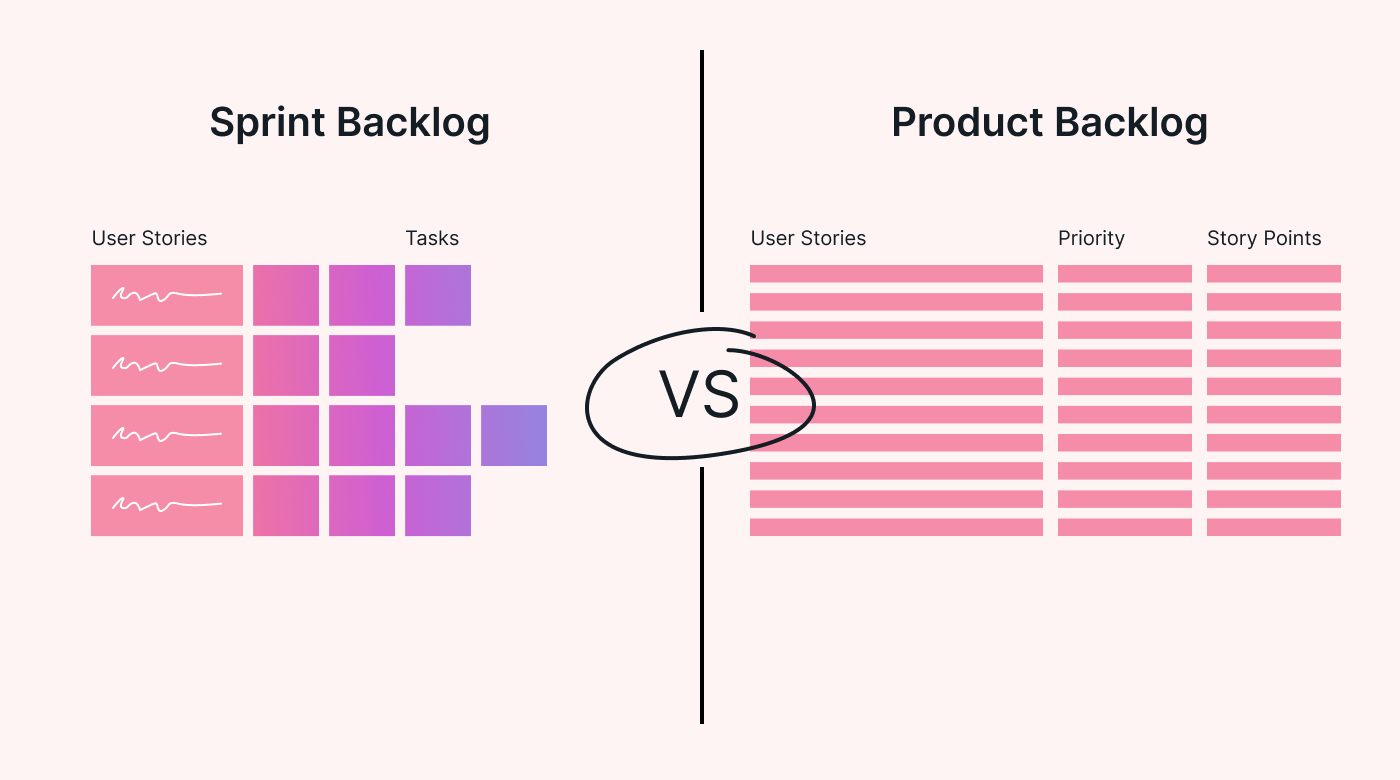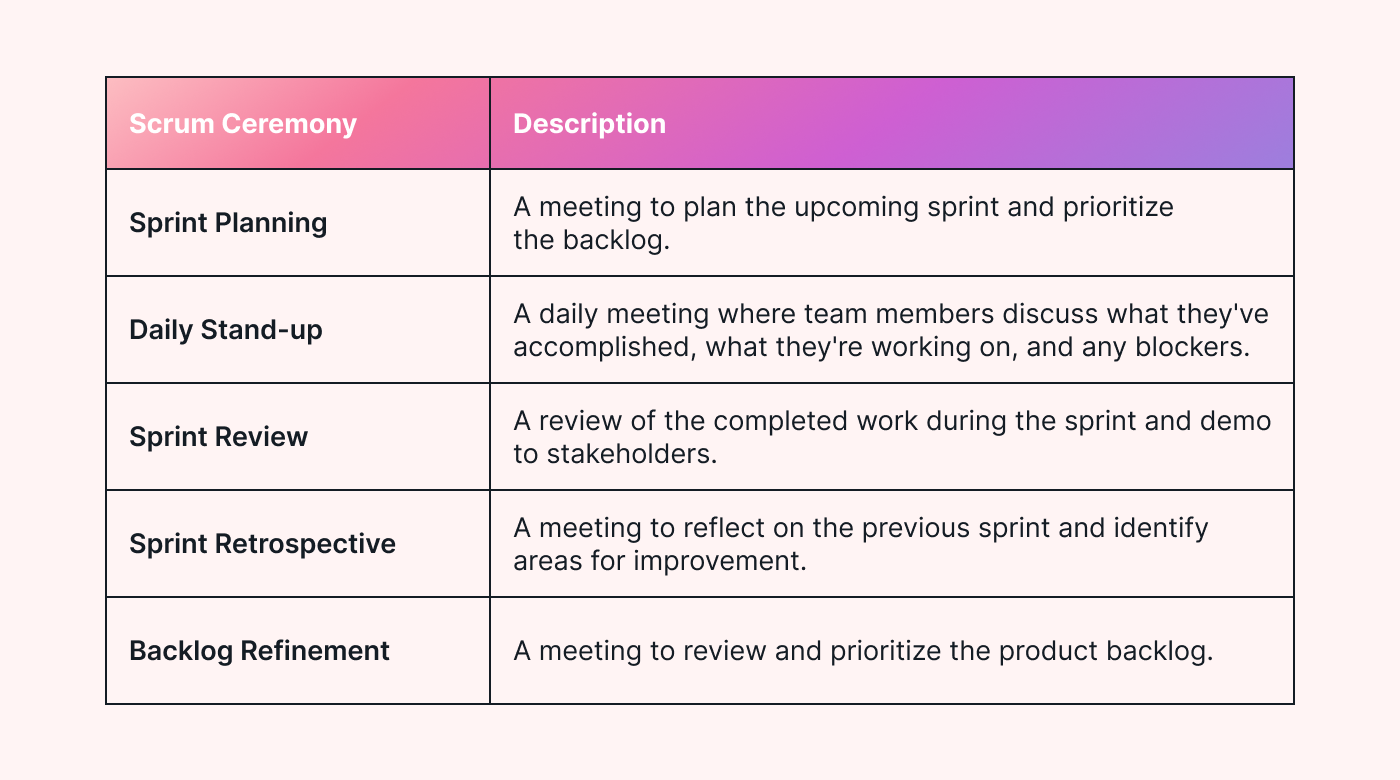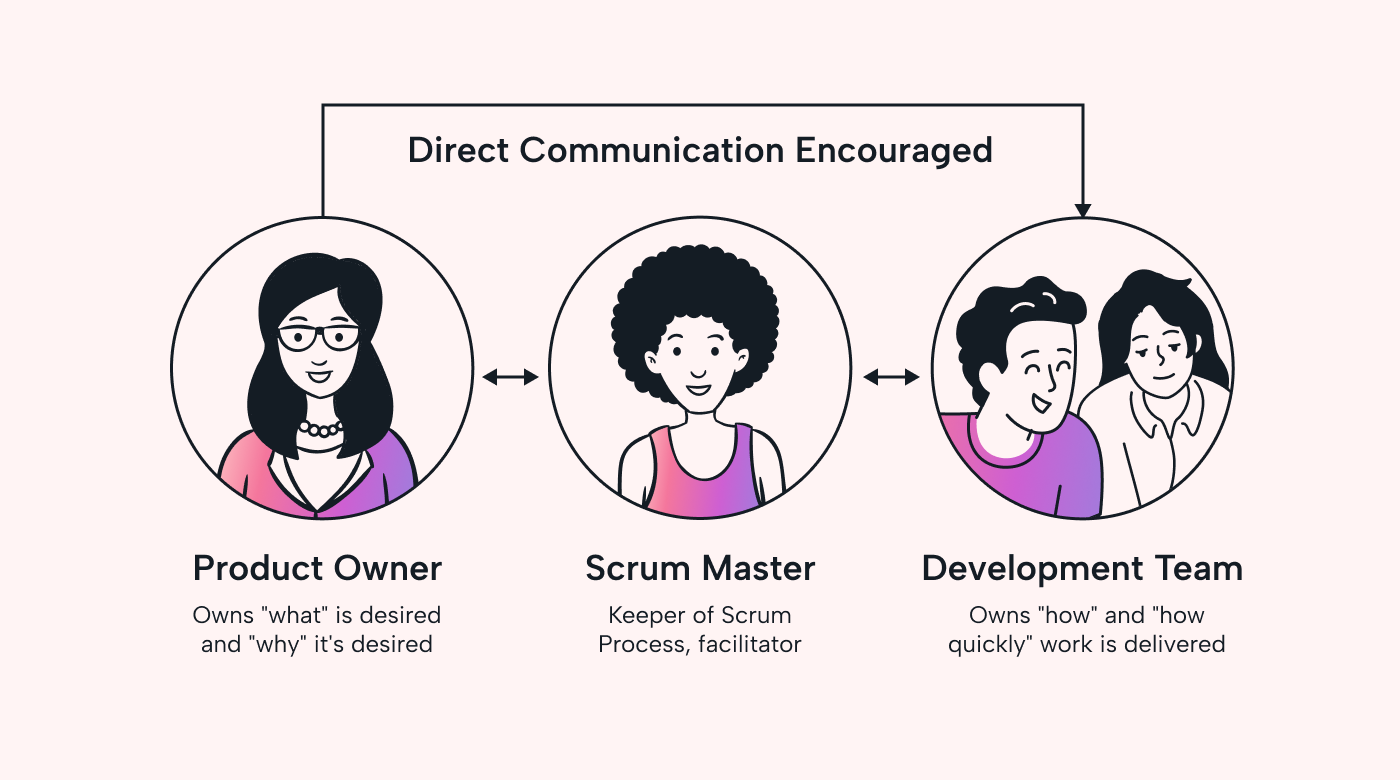Unclear priorities and ongoing scope creep. Managing sprints can seem like an uphill battle.
You thought Agile would make project management more manageable, but you still feel like you're working on all the wrong things.
We get it.
You might be surprised that Agile isn't one size fits all. This is especially true if you're not using it consistently or your organization isn't set up for it. The 2022 KPMG PMI Project Management Report highlights that 25% of respondents found that their organization's structures didn't support Agile delivery methods. This is even though Agile was the prescribed project management approach.
You're missing everything Agile has to offer if you're not running ceremonies or refining your backlogs regularly. This article will walk you through the in's and out's of backlog grooming (for better sprints).
What is backlog grooming (or backlog refinement?)
Backlog grooming, also known as backlog management or refinement, is a critical Agile activity that sets the direction of sprints within the Scrum framework. It involves regularly reviewing, refining, and organizing the items in the product backlog to ensure they're well-prepared, prioritized, and ready for upcoming sprints.
The product backlog is a dynamic and ordered list of user stories, enhancements, and bug fixes that make up the work to be completed in the project.
The product backlog is a dynamic and ordered list of user stories, enhancements, and bug fixes that make up the work to be completed in the project.
What are user stories?
User stories are the requirements of agile projects. They outline what your customers want from your business. This could be new features in your software or an easier way to buy on your website.
User stories are written as short snippets, or stories, in plain English and from the customer perspective.
Where and how does backlog grooming fit into the Scrum process?
Before we dive into the details of Scrum ceremonies and roles, let's first explore the importance of backlog grooming within the Scrum framework.
Backlog grooming is like tidying up a to-do list, making sure your to-do items are clear and in the right order. This step sets the stage for effective sprint planning sessions (and the ensuing sprints themselves).
Product backlog vs. sprint backlog
So, what is the backlog? How many are there?
In Scrum, two critical artifacts, or backlogs, must always remain up-to-date. These are the sprint backlog and the product backlog.
 |
While you may have heard the terms sprint backlog and product backlog used interchangeably, they’re very different.
Product backlog: This is the big picture – a shopping list of everything that must be worked on in the project. These aren't detailed but usually in the form of user stories. The project will consist of multiple sprints that'll contain product backlog tasks.
Sprint backlog: This is a zoomed-in version of a list of things that’ll be worked on in the sprint following the sprint planning meeting. Here, product backlog requirements (user stories) are broken down into specific tasks ready to be completed during project execution.
These two artifacts are the result of two important Scrum ceremonies.
What are the Scrum ceremonies?
Another critical part of the Scrum framework is the Scrum ceremonies. In fact, your ceremonies and artifacts will drive each other in iterative cycles.
These are the five Scrum ceremonies:
- Sprint planning meeting: This is where you set the sprint goal and set up the upcoming sprint backlog from the previously groomed project backlog.
- Daily Scrum (stand-up): A quick daily meeting to review the status of sprint tasks.
- Sprint review: A review of completed work of the sprint - this can include a feedback round with clients.
- Sprint retrospective: A reflection on the previous sprint to document the lessons learned and to set action items on what to improve next time.
- Backlog refinement sessions: This is your regular backlog grooming meeting to refine the product backlog so it’s ready for a productive sprint planning meeting.
A quick overview of Scrum teams
To truly get the most out of your ceremonies, you'll need to assign your Scrum roles to your product team members. This goes beyond functional roles like project manager or copywriter. If you're unfamiliar with these roles, here's a quick overview.
- Scrum master: The facilitator of your Scrum ceremonies and keeper of the Scrum processes.
- Product manager or owner: Determines what your clients or users want (and why). This person is responsible for the product backlog and backlog grooming (refinement).
- Product development or delivery team: The remaining project team that owns and executes the action items (tasks). Preferably a cross-functional team.
Here’s how they work together:
When you have productive ceremonies and confident team members clear on their roles, you're already well on your way to better sprints.
But how does this play into backlog refinement?
Based on your ceremonies and sprint outcomes, your product owner can better determine what's valuable to the end user (customer). They can then follow these simple steps to manage ongoing backlog refinement sessions.
Why is backlog grooming so important?
A backlog grooming meeting is a great way to prioritize tasks and clear old, unnecessary tasks from your backlog. Here are some other reasons that backlog grooming is so important in an Agile project (or business):
- Clarifies high-priority items so everyone knows what the customer(s) most want from your projects.
- Allows you to accurately estimate efforts so you can set accurate timelines and effectively manage your resources.
- Reduces uncertainties for smoother sprints and the ability to respond to changes more quickly.
- Helps you deliver high-quality products and services while still being able to stay responsive regardless of market conditions.
Don’t waste resources on tasks that don’t deliver the value your customers expect.
How to master backlog refinement: Your checklist
Here's a simple checklist to help you or your product manager master product backlog grooming sessions:
1. Prioritize
- Review and shuffle your list of product backlog items based on what's most important now. Put the most critical backlog items at the top of the list, preferably in the next sprint.
- Determine the most valuable steps for your customers by reviewing feedback and conducting surveys.
- Align the value of these backlog items to your broader business objectives (think increased revenue and customer satisfaction).
2. Estimate
- Estimate how much story time each backlog item might need. This doesn’t have to be exact at this point. It can be within a range or “t-shirt” size (S, M, L, XL).
(This will make sprint planning easier because you'll have done the groundwork for when it's time to break down the backlog items into tasks and estimate efforts in more detail.)
3. Keep it simple and tight
- Remove product backlog items you don't need anymore (for an easier grooming session).
- Keep your list of items focused (read: not too long).
4. Keep improving:
- After your next sprint, review your last backlog refinement meeting and discuss how things went with the project team. Did you assign the right tasks? Did they have all the information? Did you prioritize the right things?
- Think about how you can do things better in future sprints and document your lessons learned to bring them into your sprint planning.
5. Do it regularly:
- Involve everyone in a regular review of how your sprint ceremonies and backlog refinements are working out so that you can have complete oversight and make the process even better. The consistency and commitment to continuous improvement make this process so effective.
By following this checklist, you'll become a pro at keeping your backlog items in order and making your sprints run like clockwork.
Pro tips for better backlog refinement
Refining your backlog is just one step in a wider Scrum framework.
Here are some tips for running productive backlog grooming sessions.
Collaborate
- Talk with your entire cross-functional team about the tasks in the product backlog and determine which are most relevant or no longer need to be done.
- Your product owner might be responsible for getting the grooming done, but, as the saying goes, it takes a village. Involve the team. Get input from everyone.
- The entire team should understand what needs to be done so that when the tasks are moved into the sprint backlog, little additional information is required, and work can start as soon as possible.
Don’t take your eyes off the ball
- Backlog grooming is an ongoing process. Add it to your schedule as a recurring meeting. Make them "deep work" sessions.
- Constantly reprioritize: Discuss important tasks first for clarity.
- Remove what's not needed: Get rid of tasks that aren't relevant.
Use project management tools
- Use visuals: Digital whiteboards are great for organizing tasks visually.
- Track improvement action items in a task tracker.
- Auto-schedule your ceremonies so they're on everyone's calendars.
- Use an automated project manager with auto-assignment. Reduce your admin load.
What’s next for your sprints?
Rather than manually managing your backlog, why not use Motion to automate your task assignment and track backlog items in one central place?
Here are just some of the ways that Motion can take the load off in backlog refinement:
- Project boards to set up product backlogs - then auto-assign sprint tasks from there in your sprint planning meeting. Choose from Kanban or task list views.
- Automate prioritization of sprint tasks based on the due date, start date, and availability (as determined in your backlog refinement ceremony).
- Automate task distribution and prioritization when things change. This is particularly helpful for complex projects with lots of tasks to manage.
- Create a centralized place to manage work, meetings, and documentation.
- Productivity focus sessions for your project team's daily schedules: Motion auto-blocks similar tasks together and prioritizes deep work to keep your project on track and schedules updated.
Let Motion do the heavy lifting with automated task management, prioritized scheduling, and AI-driven productivity. Supercharge your sprints for project success.







